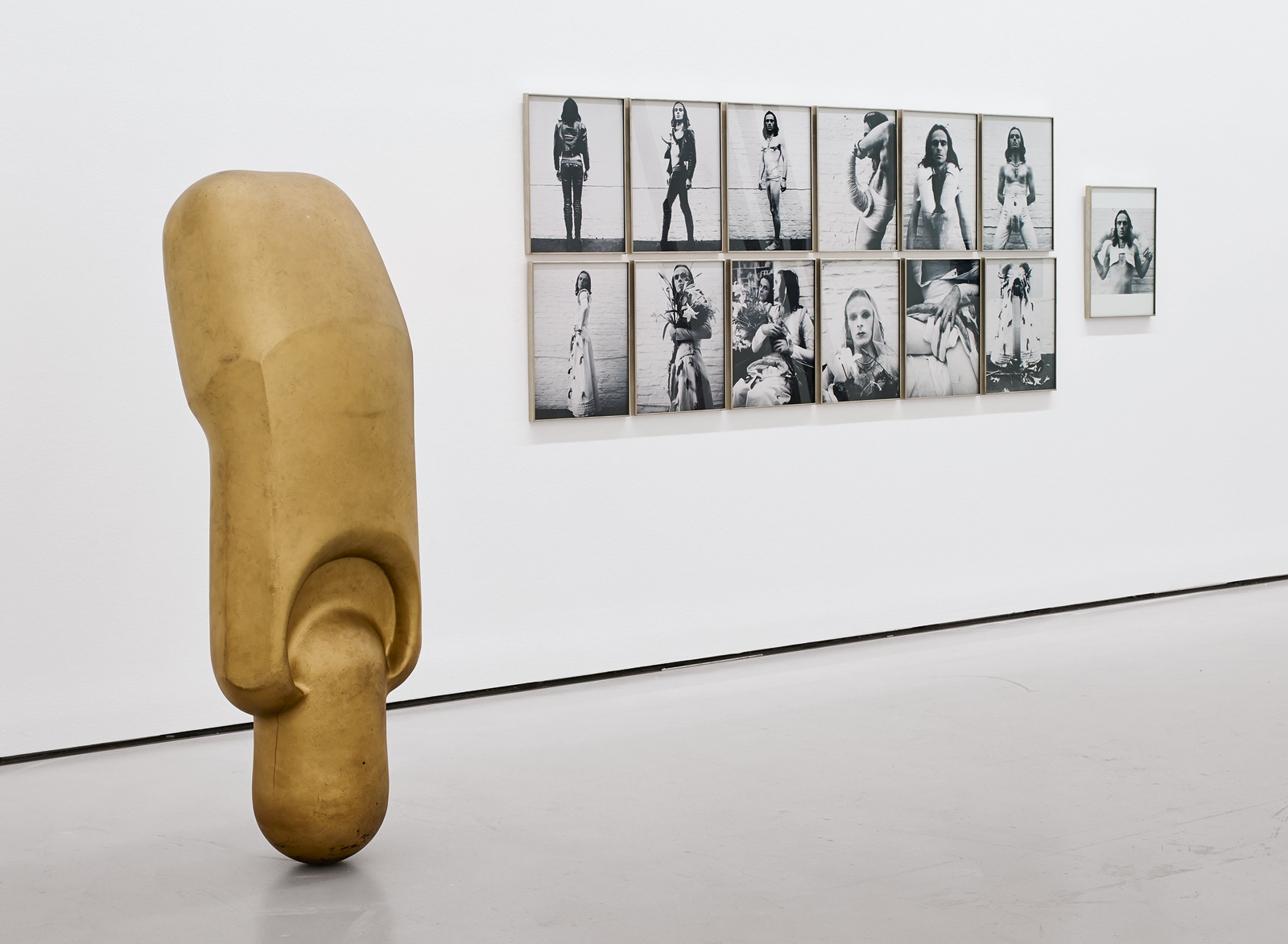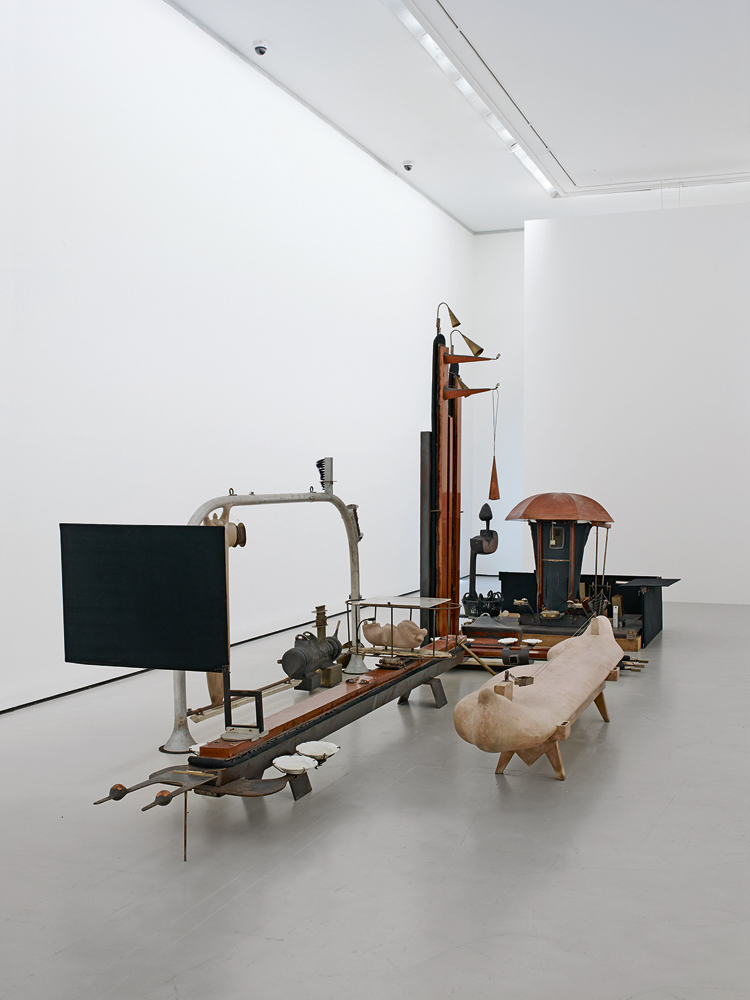A few days ago the Constitutional Court of Germany made a surprising announcement: an “undetermined sex” will be legalized, active from November 2013, as an option to mark on the birth certificate of those born within federal territory. Germany has thus become the first country in the European Union to recognize the administrative status of a third sex. Although according to the German government, the “undetermined sex” will serve only as a temporal label (allowing the parents to designate their baby’s gender until the child is able to make the choice alone), the existence of an administrative alternative to the established binary represents a line of flight from the dominant sex/gender model – according to which there exist only two natural, healthy sexes that correspond to two psychological and social genders. In the last couple of years Australia and Argentina have also modified the administrative requisites through which sex is assigned. These changes are not random. We find ourselves in the midst of an epistemic crisis in the system of representation of sex similar to the crisis that, in the sixteenth century, saw a radical shift from the Ptolemic representation of the movement of the planets to the helio-centric picture. The system of representation of sex awaits a Copernican revolution that appears to frustrate those who, up until now, have benefited from the political-sexual hegemony.
The assignation of a baby’s sex is a highly regulated social and political process. The sex of a body can only be determined from within what we could call, following Michel Foucault, an “apparatus of verification”— that is, in accordance with a thoroughly heterogeneous ensemble of institutional, administrative mechanisms, discursive practices and techniques of visual representation that make possible to separate false statements from true statements. Capitalist and colonial discourses in Europe at the end of the nineteenth century, which were centered around maximizing the reproduction of the nation, functioned through an apparatus of verification of the sex binary: bodies were organized and managed depending on whether they were considered potentially functional uteruses or producers of sperm. The cracks in this system of representation had already begun to show at the beginning of the nineteenth century with the violent management of the so-called “hermaphrodites”; bodies whose genital anatomy couldn’t be classified as either feminine or masculine. From this moment on, the medical and legal discourse was faced with the existence of a multiplicity of bodies that escape the binary form of the apparatus of verification of sex. The conventions of sexual assignation that operate today in the West emerged from a response that a group of child psychologists from the John Hopkins University in Baltimore gave in the 1950’s to this epistemic crisis. Psychologist John Money and his team decided that it was politically more ‘profitable’ to modify the body of hermaphrodite babies (referred to as Intersex) with the help of a series of violent surgical interventions and hormones than to modify the apparatus of verification of the sex binary.
Today we still function under the Money conventions, yet the new tools of chromosomal reading, either genetic of biochemical, in the last couple of years has further put in question the validity of the sex binary. Within scientific discourse and debate, we talk today of 5, 6, 7, or even n+1 sexes. Intersex, queer, transfeminist and disability activists have demanded recognition of a multiplicity of somatic, psychological and political bodies, soliciting an urgent change to the way in which sex is assigned. However, the modification of the apparatus’ of verification through which a body is socialized and recognized as human are today hijacked by a new emergent group of experts: not only biologists and doctors but also social engineers, religious representatives, lobbies for the pharmaceutical, textile and health industry…this is a deterritorialized and diverse group of organizations and social managers. My hypothesis is that a society cannot affirm itself as democratic if its citizens can’t access the production and the modification of the apparatuses of verification through which they are governed. Effective democratization of a society could measure itself in the following way: the participation in and access to the terms of the apparatus of verification and classification systems that govern the distribution of life and death chances— through which normality and pathology, health and illness are defined.
To confront a society in which only experts (scientists, industrialists, professionals of governmental practices) have access to the modification of the apparatuses of verification is precisely to defend a society in which the apparatuses of verification are spaces open to social creativity. And here is where art practices and cultural criticism become indispensable: to imagine other possible apparatuses of verification. The artist and critic are, following Douglas Crimp, “cultural activists” to the extent to which they invent and experiment with alternative systems of verification and new techniques of dissident subjectification.

In the foreground : Louise Bourgeois, Arched Figure, 1993. Courtesy Belvedere, Vienna. Photo: Gregor Titze
I’ll give an example of the capacity of artistic practice to function as a dissident technique of verification that produces alternative regimes of truth in which the body is no longer identified as normal or pathological nor adheres to the political-visual paradigms of masculinity and femininity. In the exhibition that is taking place these days at the Galerie Belvedere in Vienna (and that can be visited until October 27th), the work of sculptor Bruno Gironcoli (1962-2010) is re-contextualised in a way that forwards these strategies. A network of artistic practices from the 20th and 21st century are re-articulated through the work of Gironcoli: from the sculptures of Carl Andre, Louise Bourgeois or Franz West, the performances and installations of Joseph Beuys or Jürgen Klauke to the paintings of Francis Bacon and the videos of Mathew Barney. The practices that form “Gironcoli’s context” could be understood as a dissident apparatus of verification that allows for the development of what Charles Taylor called a “new social imaginary” or what Michael Warner would label a “counter-public” sex.

In the foreground : Bruno Gironcoli, Stimmungsmacher, 1965-69
In the background : Jürgen Klauke, Self-Performances (1972-73)Courtesy Belvedere, Vienna. Photo: Gregor Titze, 2013
Francis Bacon’s Lying Figure (1969) distorts the apparatus of verification through which the feminine body is made visible as an object of desire for the male gaze; in Louise Bourgeoise’ Cell (1992-1993) the spectator finds themselves face to face with the body de-subjectified by the system of representation of hysteria; in Adaptive Franz West transforms a series of portable sculptures into prostheses that reconfigure a new social body; in Self Performances (1972-1973), Jürgen Klauke creates a material corporeality that displaces and elides the gender binary regime of truth. It is no coincidence that sculpture and its relationship to the history of technology are at the centre of Gironcoli’s work: here the artist invents a new series of codes through which material is converted into bodily matter.
The work of Gironcoli functions as an abstract system of representation of the body that opposes not only the conventions of the traditional, classic human, but also Money’s protocols: “Gironcoli is a “morphologist of machines,” a Dadaist of the age of biotechnological reproduction, a Burroughs of technical systems and volumes, a hip-hop sampler working with chunks of political anatomy and the history of design. Living bodies, furniture, sculpture and architecture belong to the same biotech production system. Gironcoli’s sculptures are neither anthropomorphic nor zoomorphic forms, neither male nor female, but rather systemic assemblages of a multiplicity of interrelated bodies and technical devices. Gironcoli’s sculptures are cut-ups and fold-ins with the techno-living material text of the history of biopolitics…The sculpture Ohne Title (1995-1996/2004) is to the biopolitical production of the 21st Century what Michelangelo’s Pietà was to the theological representation of maternity in the Renaissance, and what Rodin’s Eternal Idol was to Romantic heterosexual intercourse in the late nineteenth century. Taking into account the multi-species result, we could venture that Ford and Monsanto have taken the place of Dad and Mum and are having “hypersex” with Ikea. From the savage intercourse of corporations, human-crocodile-missile fetuses are being born.” * The work of Gironcoli allows a glimpse of other ways of being a body, of existing materially, offering us an invitation to imagine other modes of governing and being governed, other means to collectively manage difference.

The Pieta by Michelangelo, St. Peter’s Basilica, Rome. Photo: Jean-Christophe Benoist. Creative Commons License.
*See Beatriz Preciado “After Organicism: Gironcoli’s Techno-Somatic Fictions,” in the catalogue for the exhibition “Gironcoli: Context” edited by Bettina M. Busse and Agnes Husslein-Arco, Belvedere, Vienna, 2013

